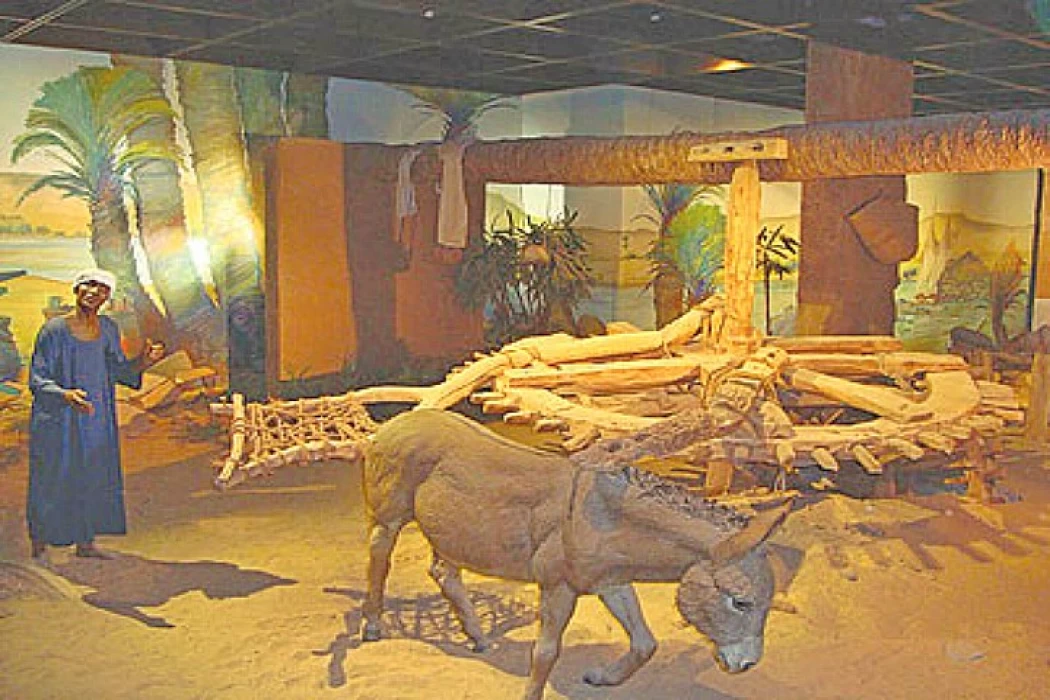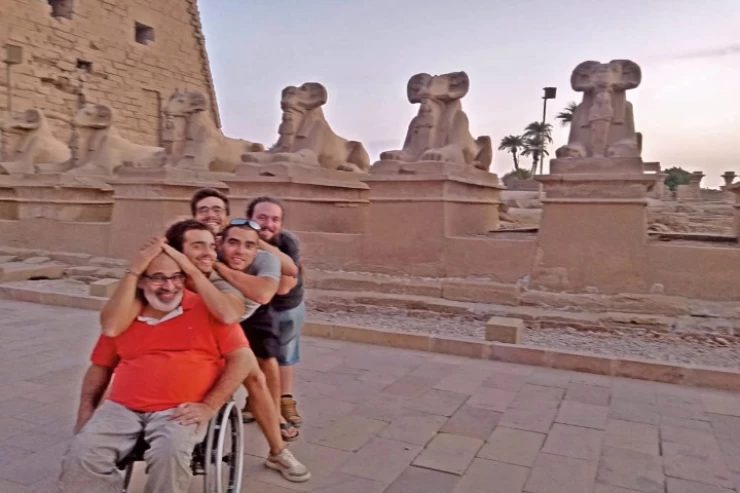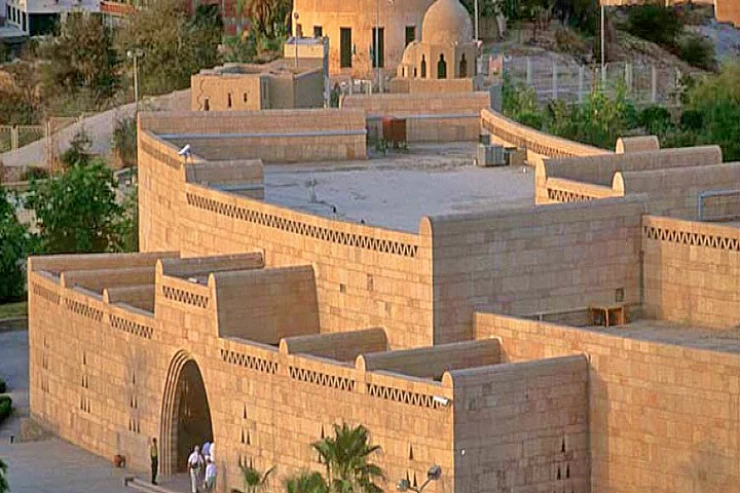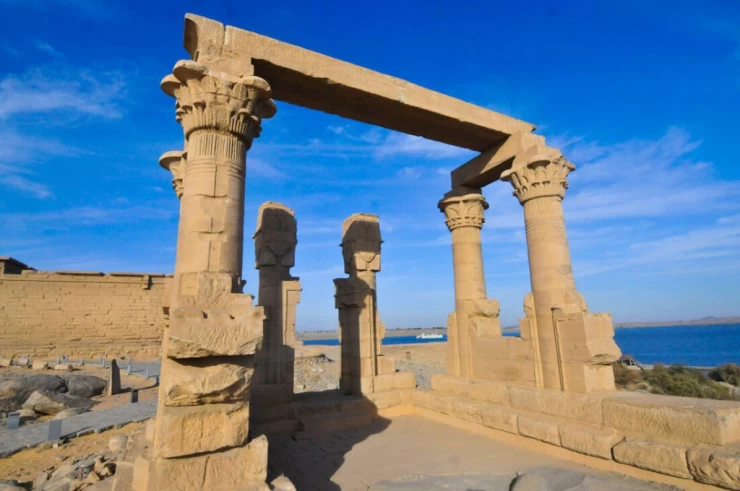
The Ancient Nubia
Name
The name Nubia is believed to be derived from the ancient Egyptian word "Nob", which means" gold " as the gold used in ancient Egypt largely came from that region.
Geography
It's located between the first and second waterfalls. This area includes southern Egypt and modern northern Sudan, while Upper Nubia (which was named Kush during the reign of the twelfth Egyptian dynasty and the Greeks called Ethiopia). Today, the pronunciation of Nubia has been limited to a smaller area, located in southern Egypt and northern Sudan.
History
Early settlements originated in Upper and Lower Nubia, and the Egyptians referred to Nubia as "Ta-Seti", or" land of the bow," as the Nubians were known to be skilled archers. Modern scientists usually refer to people from this region as"Group A". Members of Group A participated in trade with the Egyptians, and there is archaeological evidence of the presence of large quantities of Egyptian goods deposited in the graves of members of Group A. Imports consist of gold objects, copper tools, and amulets from shells and beads, seals, stone tablets, and a variety of utensils. Researchers also carried out excavations in Qustal in the period 1960-64, and found artifacts that included images associated with the Egyptian pharaohs. From this, Williams concluded that "Egypt and the group a civilization of Nubia shared the same culture", and that Qustal "was probably the seat of the founding family of Egypt". David O'Connor has written that the qustal incense burner provides evidence that the group of a Nubian culture of qustal marked the "pivotal change" from pre-dynastic art to "Egyptian archaeological art."
Recent studies have found that distinct pottery styles, different burial practices, different grave contents, and the distribution of sites all indicate that the Naqada civilization in Upper Egypt and the members of the Nubian group were from different cultures. The civilization of the first group ended around 3100 BC, when it was destroyed, apparently by the rulers of the first dynasty of Egypt.
Group (B)2700–2300s.M
Group A began to deteriorate in the early twenty-eighth century BC. A group landed in the area and found the civilization of Group A in a state of weakness and collapse, which made the new group B control the area, but many scientists have proved that group B is only the descendants of Group A who later returned to Nubia, or an intermediate part between groups A and C.
Group (C)2300–1600s.M
King Sneferu (C.2575 BC) led a raid on Nubia and established an Egyptian outpost at Buhain. During the period of the sixth dynasty, the Egyptian rulers of Aswan began far-reaching trade campaigns, sometimes combined with military raids. New inhabitants (called Group C by archaeologists) inhabited the wawat, while a group known nowadays as the Karma civilization occupied the Kush region. After the conquest of the region during the reign of the Egyptian New Kingdom, the population of Group C in Lower Nubia was Christianized until their previous culture disappeared.
Civilization of karma
It is considered one of the oldest cultural centers in the Nile Valley, and its inhabitants spoke the Kushite language. It is likely that the inhabitants of the area of the Karma civilization are the origin to which the Kushites are attributed. By 1750 BC, the Kings of Karma were powerful enough to erect massive walls and huge adobe structures, and they also had tombs rich in possessions that they believed would go with them to the afterlife.
Kingdom of Kush
After the disintegration of the new Egyptian kingdom, the Kushites became independent and founded their own kingdom, which was centered in Nabta during its early stage. During this period, the Kushites invaded Egypt under the leadership of Pharaoh Pankhi and took control of Egypt in the eighth century BC. They ruled Egypt as the Twenty-Fifth Dynasty.
The Kushites ruled Egypt for almost a hundred years, and one of the most famous kings of that era was the Nubian Pharaoh Taharqa, the third successor of bankhee, who was crowned in Memphis, Egypt, in 690 BC.
Nubia in Egypt
Qashmat peacefully became the king of Upper and Lower Egypt with his daughter Amandiris as the divine adoratrice of Amun in Thebes. The rulers of the Twenty-Third Dynasty withdrew from Thebes to Herakleopolis, avoiding conflict with the new Kushite rulers of Thebes. The city of Nabta was the spiritual capital of Kush, and from there, Bey (spelled Bianchi or Bianchi in ancient works) conquered Egypt and took control of it.
"as is often suggested in Egyptological studies". Due to its obsolescence, Bey mostly used the royal title of Thutmose III, but he changed the name of Horus from "the appearance of the mighty (crowned) bull in Thebes" to "the appearance of the mighty bull in Nabta" to declare that the Kushites had reversed their history and triumphed over their previous one. The goodness of the Egyptian conquerors. He also revived one of the greatest features of the ancient and Middle Kingdoms: the construction of the pyramid. As an active builder, he built the oldest known pyramid at the royal burial site of El Crow.
The reign of Taharqa was a prosperous period in the empire with significant flooding of the Nile River and an abundance of crops and wine. Taharqa's inscriptions indicate that he gave large amounts of gold to the temple of Amun in the alcove. His army conducted successful military campaigns, as evidenced by the "list of conquered Asian principalities" from the temple of MUT in Karnak and the " conquered peoples and states (Libyans, Bedouin chasso, Phoenicians?), A creek in Palestine" from the Temple of Sanam inscriptions. Laszlo Turk reports that the military success was due to Taharqa's efforts to strengthen the army through daily long-distance running training and Assyria's preoccupation with Babylon and Elam. Taharqa also established military settlements at the fortress of Al-Samnah, Buhen, and the fortified site of Qasr Ibrim.
There are various theories (the army of Taharqa, illness, divine intervention, the surrender of Hezekiah, the rat theory of Herodotus) about why the Assyrians failed to capture Jerusalem and retreat to Assyria. Judah had to pay tribute after the siege, and Sennacherib became the ruler of the region. Conquest of Khor (as the Assyrians did before 701 and after the death of Sennacherib). In 681 BC, Sennacherib was killed by his sons in Babylon.
In 679 BC, Sennacherib's successor, King Esarhaddon, campaigned in Khor, destroyed Sidon, and forced the city of Tyre to pay tribute in 677-676 BC. The influence of Taharqa's Egypt remains in Khor during this period, as King Baalu in Tyre placed his "trust on his friend Taharqa". Another clue is the alliance of Ashkelon with Egypt and the inscription of Esarhaddon which asks "whether the Kushite-Egyptian troops planned and strove to wage war in any way" and if the Egyptian troops would defeat Esarhaddon at Ashkelon.
Tantamani's dream painting mentions that he restored order from chaos, in which temples and Royal cults were not preserved. After the capture of SAIS and the murder of Assyria's vassal, Necho I, in Memphis, "some local dynasties formally surrendered, while others retreated to their fortresses". The Kushites influenced their northern neighbors for almost 100 years until they were repelled by the Assyrian invaders. The Assyrians installed the twenty-sixth dynasty of Egypt under the leadership of Psamtik I and permanently forced the Kushites out of Egypt around 590 BC.
The heirs of the Kushite empire founded their new capital in Nabataean, which was also plundered by the Egyptians in 592 BC. The kingdom of Kush lived for another 900 years after being pushed south to Meroe. The increasingly doomed Nubian culture grew in Africa after the fall of the Twenty-Fifth Dynasty until Queen Amanishakheti acceded in 45 BC. [Temporarily stopped the loss of Egyptian culture, but then continued unchecked.
The irrigated period. In 591 BC, the Kushite king Aspalta tried to conquer Egypt, which came under the rule of the twenty-sixth dynasty, but he was defeated, and the kingdom of Kush was subsequently subjected to an invasion launched by Pharaoh Psamtik II. This prompted King Aspalta to change his capital to the safer city of Meroe, which enjoys a strategic location and great natural resources. And in about 300 BC, the transition to Meroe became more complete when the Kings began to be buried there, instead of in a plant.
The people there retained the Pharaonic Customs and traditions, but they were unique in several respects. They developed their own form of writing, since they were using the hieroglyphic Alphabet, replacing it with an alphabetic script consisting of 23 signs. Since the reign of King Arkmani, Kings have been buried in Meroe.
The Romans conquered Egypt in 31 BC. During that period, many battles took place between the Kushites and the Romans, and the Roman forces clashed with the armies of the Kushites near Thebes, and in that period the kandaka Amani Rinas, Queen of Meroe, who led the Nubian armies and attacked Aswan and defeated the Roman armies in Aswan and elephants, and took many prisoners from the Romans, and took many statues of Emperor Augustus, and she placed the bronze statue of Emperor Augustus under the entrance of her palace so that everyone who entered and left the palace trampled on it.
After this initial victory, the emperor Augustus sent an army to Nubia led by Petronius, who held the post of Roman governor in Egypt at the time, and they pressed the Kushite Army in Aswan and retreated to the Holocaust and Dikka, and the Roman armies chased them until they retreated to Qasr Ibrim, and the Roman armies defeated the hopes of Rinas. Petronius ordered the erection of a Roman garrison at Qasr Ibrim and considered this the end of the Roman border with Nubia. The Roman armies advanced south until they reached Nabta and attacked it. By the first or second century AD, the kingdom began to gradually weaken until it finally fell to the Christian King Ezana of the kingdom of Aksum (Abyssinia).
Achaemenid period
The Achaemenids occupied the Kushan Kingdom, probably from the time of Cambyses (C.530 BC), and most likely from the time of Darius I (550-486 BC), who mentioned the conquest of Kush (Kushtia) in his inscriptions.
Ptolemaic era
The Greek Ptolemaic Kingdom under Ptolemy II Philadelphus conquered Nubia in 275 BC and annexed the northern twelve miles of this area, later known as Dodekaschoinos (` land of twelve miles').
There is no record of conflict between the Kushites and the Ptolemies. However, there was a serious rebellion at the end of the reign of Ptolemy IV, and it is possible that the Kushites tried to interfere in the affairs of the Ptolemies. It is suggested that this led Ptolemy V to smear the name of Arqamani on inscriptions in Philae. "Arqamani constructed a small entrance to the temple built by Ptolemy IV in Psilkis and constructed a temple in Philae to which Ptolemy contributed an entrance hall.
Christian kingdoms
The period of the Meroitic civilization was followed by a mysterious era about which little is known due to the lack of sources. In the fifth century AD, after the fall of Meroe by the hand of Ezana, the Belemians (part of the Beja) established a short-lived State in Nubia, mostly centered around Kalabsha, but they were ousted by the Nubian king Seliko, who triumphed over them and recorded his victory in an inscription in the temple of Kalabsha, around 500 AD. By the sixth century AD, there were three Nubian kingdoms in Nubia: the kingdom of Nobatia in the north, with its capital in Fars, and the kingdom of Al-muqara.
Kingdom of Nobatia
The kingdom of Nobatia, also known as the kingdom of the Maris, is located in Lower Nubia, bordered to the north by Roman-controlled Egypt, and to the South by the kingdom of Makra, and it is believed that the kingdom was already independent before the final fall of the kingdom of Meroe in the middle of the fourth century AD. The king of Nabatia, King Seleuco, recorded his victories over the Belemians, defeated them, and pushed them into the eastern desert.
The Arab and Islamic era.
Not long before the throne of Beja came to them by Khawala, they took control of the region and spread Islam and Arabic among the Beja, and Al-Masudi, who visited Egypt around 940 AD, mentions that the Arabs of Rabi'a mixed with Beja, and also talks about groups from the tribes of Qahtan, Rabi'a, and Quraysh entering Lower Nubia. Rabia established the Arab Emirate of Bani Kenz in the northern region of Nubia. As for Juhayna, Ibn Khaldun says about them that they multiplied the people there and conquered the land of Nubia, dividing their word and removing their king. Islamic rule was established in the kingdom of Al-maqra at the end of its reign, and the Arabs mixed with Nubia, and most of the Nubians accepted Islam.
Nubia (Arabic Nuba) A region of northeastern Africa, located between Egypt and Sudan, crossed longitudinally by the Nile, bounded on the north by the Aswan Locks, on the east by the Red Sea, on the south by the confluence of the Blue Nile and the White Nile, and on the west by the Libyan Desert. Only in the immediate vicinity of the Nile, interrupted by six locks, is a strip of arable land crossed by railroads; here are the principal centers: the Berber, the center of caravans to the Red Sea, at the confluence of the Atbara; the old center of Wadi Halfa, on the border of Egypt and Sudan, was inundated after the construction of the Aswan Dam.
At the beginning of the historical epoch (3500 B.C.), while Egyptian civilization was acquiring more and more independent features, a delayed sub-Neolithic (the so-called "Group A and B" cultures) continued in Nubia, which at the end of the Old Kingdom (2250 B.C.) developed into an autonomous and rich ceramic production (the so-called "Group C" culture, which would form the initial background of all overlaps of Egyptian Middle Kingdom and New Kingdom culture).
The Old Kingdom was interested only in exploiting the gold mines of the Nubian land; in the Middle Kingdom, military expeditions undertaken to protect the country's southern borders and trade routes led to the construction of a series of Egyptian fortresses along the river as far as Semnakh, south of the second cataract, without a process of amalgamation with the indigenous population or forms of expansion. Under the New Kingdom, under Thutmose I (1504-1492 BCE) in the
Nubian culture does not reflect the connotations and beliefs of its people. Tattoos are considered cultural symbols of Nubia for both men and women, as are murals, beadwork, and palm-frond and wickerwork, which attract tourists, especially foreigners.
The decorative elements, according to the State Information Service, carry specific connotations. The sword symbolizes heroism and courage, while the crescent and star symbolize optimism. The crow and owl are also symbols of bad luck and destruction.
It is called the Land of Gold. The name Nubia is derived from the word (Nub), which means gold in ancient Egyptian. It was also famous for the gold mines that were called Nubaria. In the dictionary, we find that the word Nub means: a generation of people living in a country named after them and located in the southern part of Egypt.
In another sense, the name is attributed to Nabata, the son of the Prophet Ishmael, peace be upon him, and since their rule of the Nile Valley and Africa, they mixed with the local tribes. Over time, many of the African tribes that were under the rule of the Nabataeans took the same title. It is now noticeable that there are dozens of tribes of different races under the same title, with different tongues, and the same title remained, which is the Nubians (Nuba).
It is a Nilo-Saharan language of the Eastern Sudanic branch in southern Egypt and northern Sudan. Most of its speakers lived in the Nile Valley, in what became Lake Nasser after the construction of the High Dam south of Aswan. Its speakers number approximately one million.
Between the eighth and fifteenth centuries AD, Nubians wrote their language in the Coptic alphabet with a few additional letters. However, today, they rarely write it, and those who write Nubian use Arabic or Latin script.


















